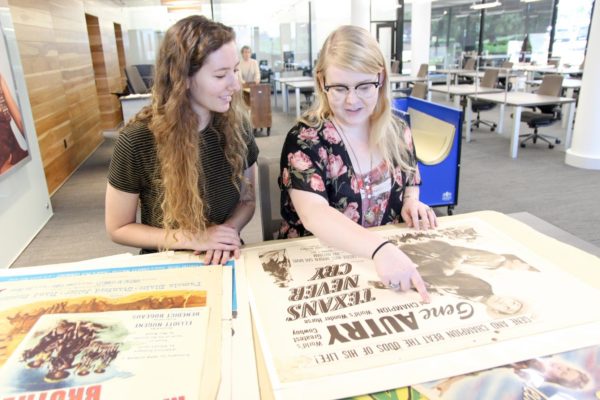AUSTIN, Texas — The Dolph Briscoe Center for American History at the University of Texas at Austin has reopened its public spaces after a comprehensive 18-month renovation. The center, which had not undergone a significant redesign since the 1970s, now boasts 4,000 square feet of new exhibit space, an updated and expanded Reading Room, and two new meeting rooms.
Inaugural exhibits include, “Exploring the American South,” which displays highlights from the center’s extensive collections documenting Southern history.
“The Briscoe Center’s core mission is to support research on campus and to foster exploration of our nation’s past through collecting, preserving and sharing historical evidence,” said Don Carleton, executive director of the Briscoe Center. “Our newly renovated public spaces will greatly enhance this mission: scholars, students and members of the public can now perform research in the new Reading Room, classes and programs will convene in the meeting rooms, and historical exhibits spaces will showcase treasures from the center’s outstanding collections.”
Austin-based McKinney York Architects led the Briscoe Center’s renovation, which included doubling the size of the Reading Room, creating new meeting and exhibit spaces, and orienting the center’s entry toward the LBJ Presidential Library, which attracts tens of thousands of history-minded visitors each year. The center’s public services are open from 10 a.m. to 5 p.m. Monday thru Friday.
“The Briscoe Center is a treasured resource, not only for our UT students, faculty and staff, but for scholars around the country,” said Gregory L. Fenves, president of The University of Texas at Austin. “I’m glad that — after much planning, fundraising and perseverance — the Briscoe Center now has exhibit spaces to support its public mission.”
The Briscoe Center was founded in 1991. Since then, it has grown into a nationally renowned research center. In addition to housing Texas and Southern history collections that were steadily acquired by the university since the 1880s, the center has more recently developed strengths in areas such as modern news media history, photojournalism, political history, the energy industry and the history of public commemoration. These collections serve as a foundation for the education of thousands of students at UT as well as for many theses, journal articles and monographs. The center also acts as its own research engine, publishing books, producing documentaries, innovating digital projects, curating exhibits and organizing public programs, all of which are inspired by its collections.
“Our collections represent evidence of the past. Without evidence, there is no history – only myth, legend, folklore, or even purposeful fabrication, half-truth, and denial,” Carleton said. “Today we need history more than ever: discussions at the heart of American identities, origins and values must remain rooted in evidence, however inconvenient it may be, and however fierce the debate it causes. The Briscoe Center strives to ensure that everyone can access this evidence because it remains a vital part of any truly informed discourse in a democratic society.”
The Briscoe Center’s inaugural exhibits are as follows: “Exploring the American South” will speak to the many layers of Southern history—from Revolution to Reconstruction—through a wide array of artifacts including photographs, letters and ledgers, sheet music, clothing and military hardware. “From Commemoration to Education,” tells the story of Pompeo Coppini’s statue of Jefferson Davis. The statue was originally part of a war memorial at the University of Texas at Austin. It stood on the South Mall of campus until August 2015, when the university’s president, Gregory Fenves, decided to relocate it to the center. The statue is now on permanent display at the center as part of an education exhibit. “From Commemoration to Education” represents an expanded version of the permanent exhibit. “Selections from the Weatherby Map Collection” will debut in the Dr. T. Karman and Carolyn Weatherby Gallery.




